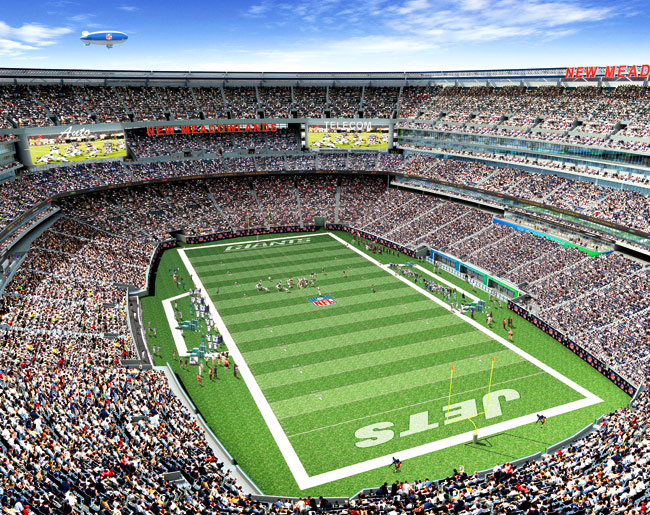A joint software solution from Vela Systems and Tekla Corporation tracks more than 3,200 precast concrete panels to improve supply chain visibility.
The New Meadowlands Stadium in New Jersey is a massive project: a $998 million, 2.2 million square-foot open air arena, designed and constructed by Skanska USA Building. As a design-build project, it is critical for Skanska to understand, in real-time, how the supply chain is performing and the current status of the production, quality control, delivery, site preparation and installation of the critical-path materials. Since the project delivery is fast tracked, unless issues are identified and resolved early on in the process, the just-in-time supply chain will not perform as planned, potentially jeopardising the aggressive schedule.
In a project of this size, seemingly small issues can have a cascading effect project wide, creating a host of time delays and cost increases. In order to effectively manage materials across the supply chain for just-in-time delivery, Skanska turned to Vela Systems and Tekla Corporation, which provided a Field BIM solution.
Skanska wanted to track the more than 3,200 pre-cast concrete pieces that will form the seating bowl of the 84,000-seat stadium. Each piece weighs about 45,000 pounds and measures 44 feet by 10 feet. What’s more, each piece is custom-made for a specific location within the bowl, and, generally, they are not interchangeable.
A just-in-time delivery system means that Skanska does not need to establish a lay-down yard, but can rely on a small holding area for trailers. The goal is to install the pieces shortly after they arrive, which speeds production. But, this system means that if the wrong piece is delivered, or fails to pass quality controls, there could be no place to store it until the correct piece arrives, causing backups and cost over-runs.
To avoid this, Skanska adopted a solution co-developed by Vela Systems, a company that makes mobile field software for construction, and Tekla Corporation, which provides Building Information Modelling (BIM) infrastructure management software. When integrated with Vela Systems’ software, BIM becomes a fully fledged construction operations solution. This new use of BIM is called Field BIM. “Skanska has previously delivered a number of successful design-build stadium projects, including Gillette Stadium in Foxboro, Massachusetts and Reliant Stadium in Houston, Texas,” said David Campbell, vice-president at Skanska. “In our experience, close co-operation among all members of supply chain is an absolute necessity for success. Vela Systems’ mobile field software is the vital glue that binds this solution together.”
First, the precast concrete pieces are outfitted with radio frequency identification (RFID) tags at the fabrication facility. These pieces are then identified through the use of an RFID reader communicating with a Tablet PC with Vela Systems Materials Tracking software installed. As the pieces move through the production process, Materials Tracking information is fed into Tekla Structures, a BIM solution that covers the entire structural design process.
With this combination, Skanska is able to gain a view into the supply chain and can visualise the status of each piece of the project in the BIM system with up-to-date information from the field, including which pieces have been fabricated, their quality assurance status, which job site areas need to be prepared for arriving panels, and which materials have been incorporated into the structure.
The status of each of these queries is apparent through the use of different colours in the Tekla 3D model of the structure. Skanska estimates this combined solution will accelerate the construction schedule by ten days, which translates into $1 million in savings. “I never have to ask whether pre-cast concrete components are ready for the following week’s work,” Campbell said. “The answer is always on the computer screen. We are never going back to paper and pencil.”
www.skanksa.com
www.velasystems.com
www.tekla.com






